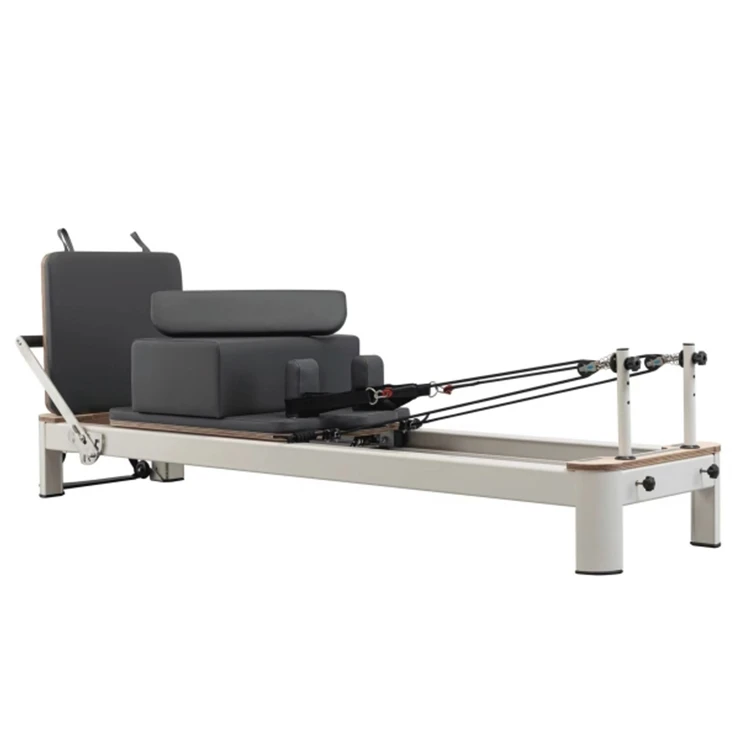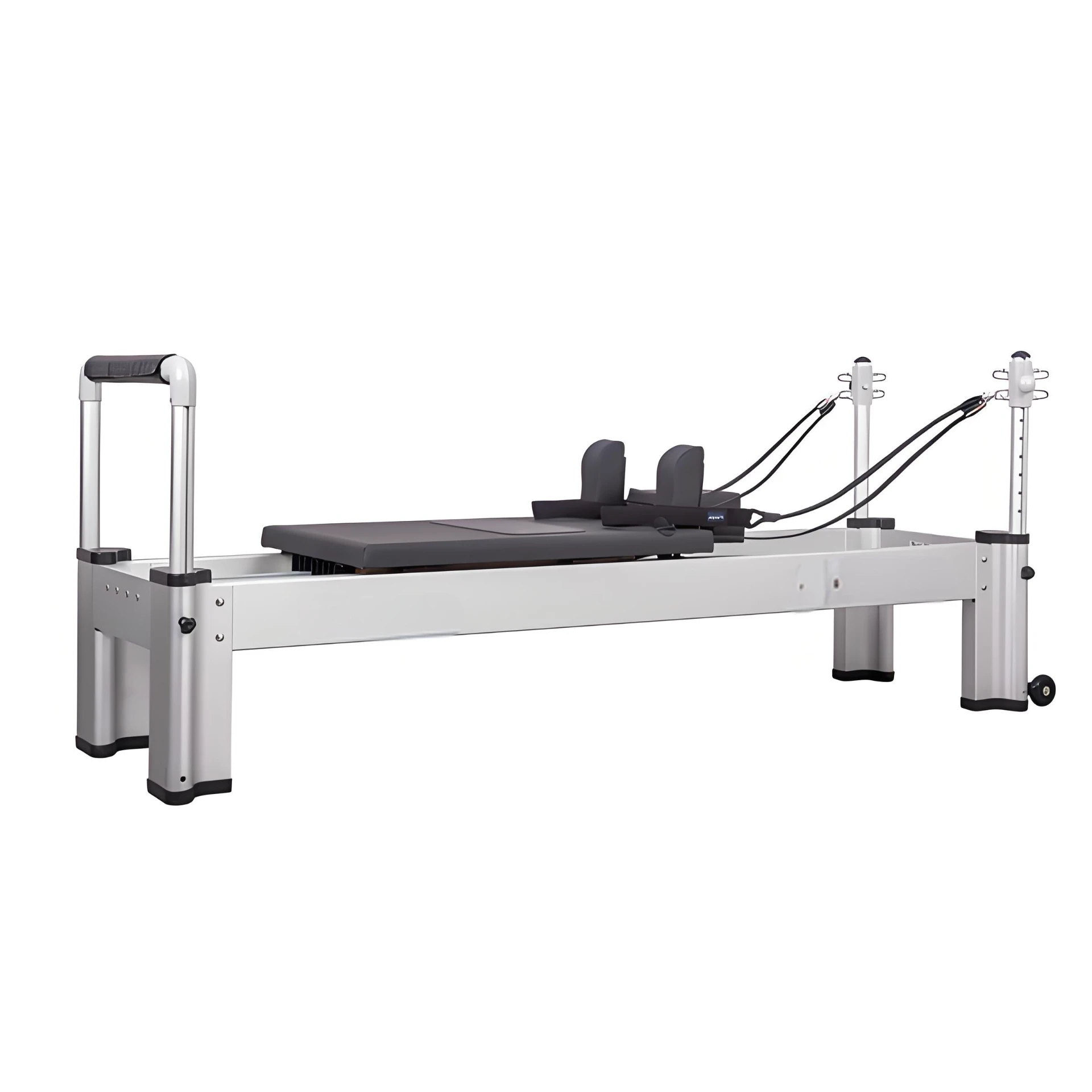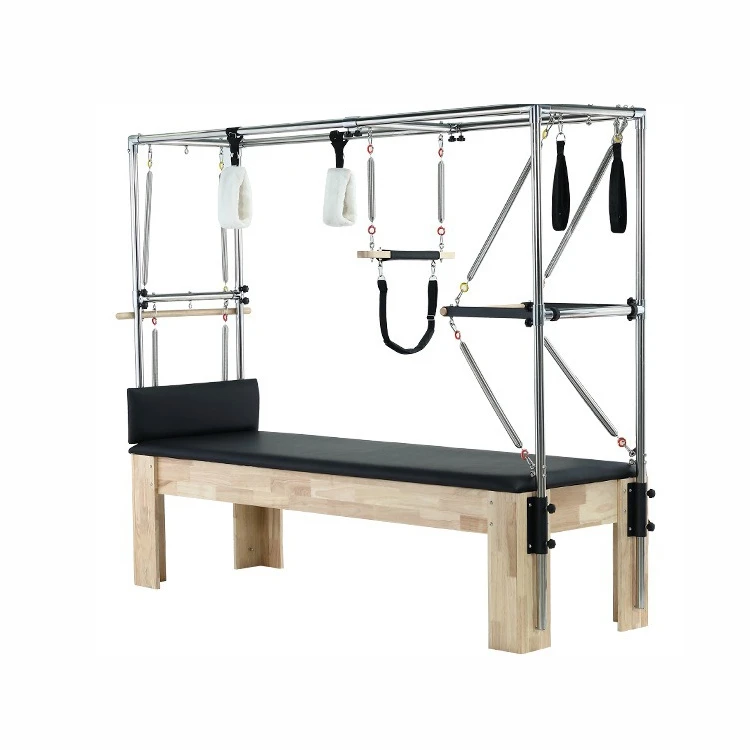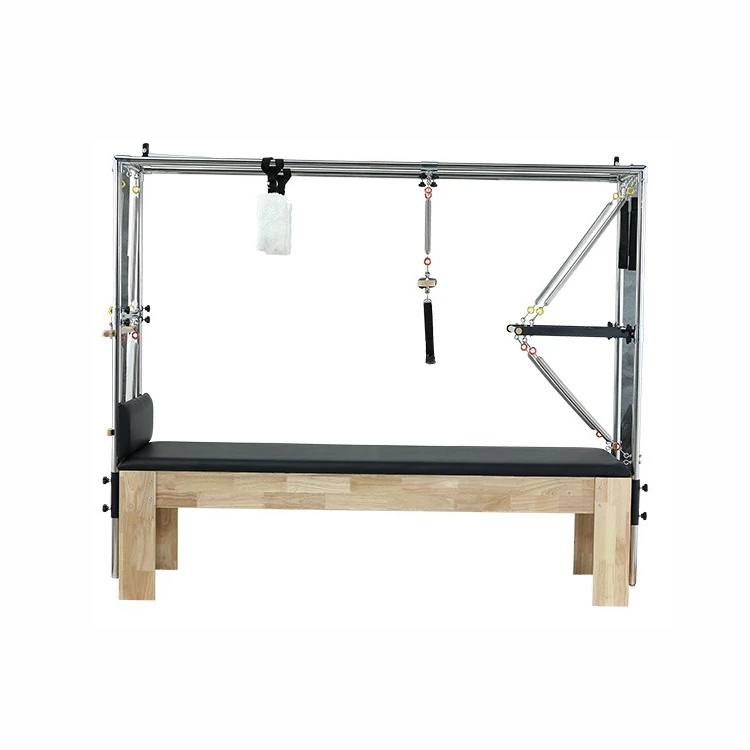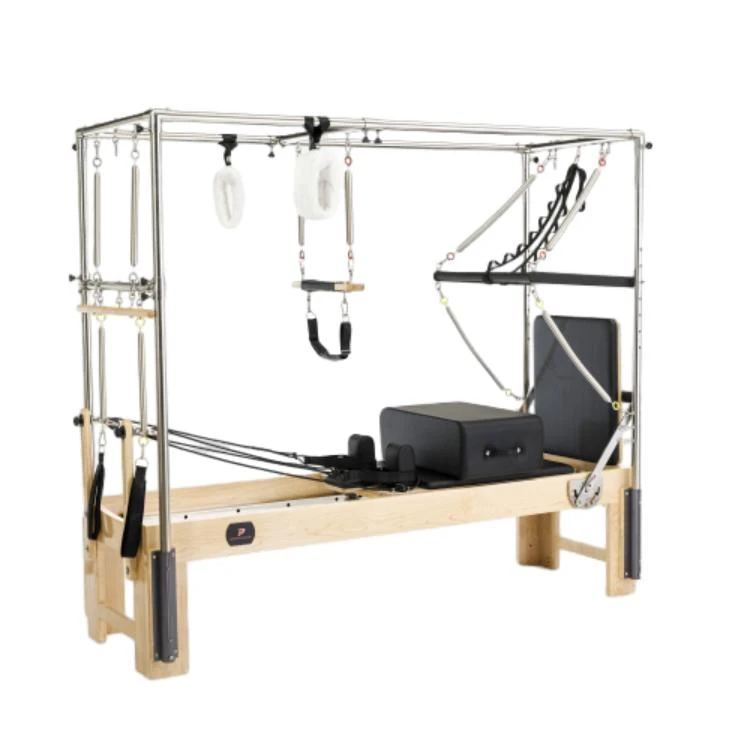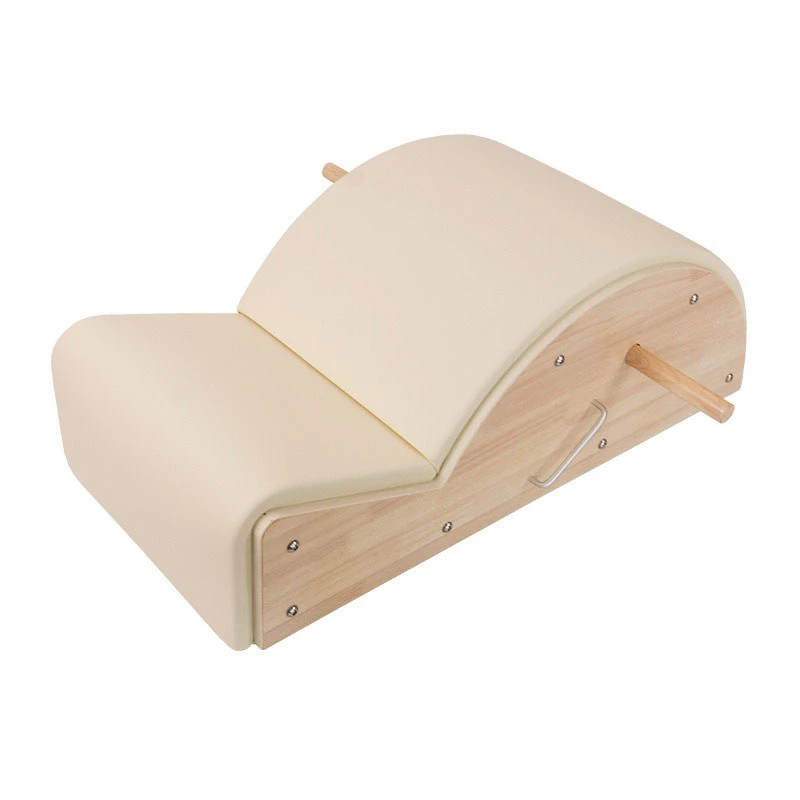Durable Aluminium Pilates Reformer - Professional Grade
The Evolution of Pilates Reformers: Embracing Aluminum for Superior Performance
The landscape of high-performance fitness equipment has undergone a significant transformation, with a growing emphasis on materials that offer an unparalleled combination of durability, precision, and aesthetic appeal. In this evolving domain, the pilates aluminium reformer stands out as a pinnacle of modern engineering, directly addressing the sophisticated demands of commercial studios, elite athletic training centers, and discerning home users. Unlike traditional designs, these reformers leverage advanced material science to deliver a consistently superior user experience, characterized by silent operation, robust stability, and extended operational lifespans. The adoption of aluminum signifies a strategic shift from conventional materials like wood or steel, providing distinct advantages in terms of weight-to-strength ratio, corrosion resistance, and adaptability in design. This material choice is not merely an aesthetic preference but a functional enhancement that supports more rigorous use, simplified maintenance, and greater versatility in various professional and private settings, ultimately enhancing the return on investment for B2B stakeholders and ensuring an optimal Pilates practice for end-users seeking excellence and reliability in their equipment.
Industry trends clearly indicate a surging demand for fitness equipment that offers enhanced longevity and reduced total cost of ownership, particularly in high-traffic commercial environments where equipment undergoes continuous, intensive use. The inherent properties of aluminum, such as its exceptional strength-to-weight ratio and natural resistance to rust and oxidation, position the pilates aluminium reformer as an ideal solution. This material choice effectively mitigates common wear-and-tear issues associated with other materials, such as warping in humid climates for wood reformers or surface corrosion for steel components. Furthermore, the modern, sleek aesthetic of aluminum reformers aligns perfectly with contemporary studio designs, reflecting a commitment to innovation and premium quality. This material’s adaptability also allows for more intricate and precise engineering of components, leading to smoother carriage glides, more stable spring systems, and overall superior mechanical performance that translates into a more effective and enjoyable workout experience. The integration of advanced manufacturing techniques further ensures that each aluminum reformer meets stringent global safety and performance standards, solidifying its position as a preferred choice for professionals seeking long-term reliability and a premium brand image.
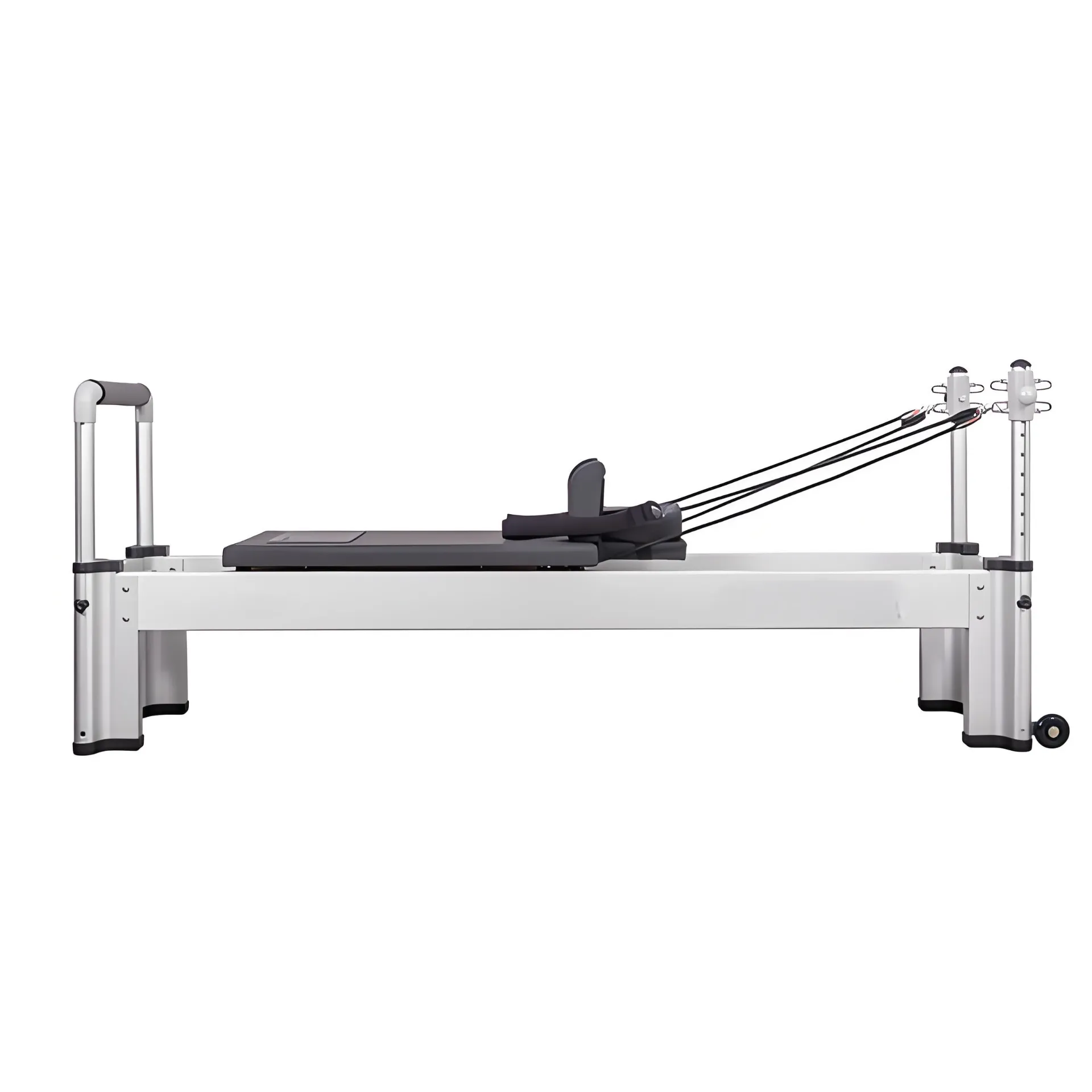
Precision Engineering: The Manufacturing Process of a Pilates Aluminium Reformer
The production of a high-quality pilates aluminium reformer is a meticulous process that begins with the selection of premium-grade aluminum alloys, typically 6061 or 7075 series, renowned for their exceptional strength, ductility, and corrosion resistance, properties often utilized in aerospace and automotive industries for critical structural components. The manufacturing journey commences with the precise extrusion or forging of the aluminum profiles that form the reformer’s foundational frame, ensuring inherent structural integrity and consistent material density throughout. Following this, the components undergo advanced Computer Numerical Control (CNC) machining, a process that enables micron-level precision in cutting, drilling, and shaping, guaranteeing perfect alignment and seamless integration of all parts. This level of accuracy is paramount for the smooth operation of the carriage and the precise functioning of the spring system, directly impacting the fluidity and safety of every exercise. Surface treatments, such as anodizing, are then applied not only to enhance the aesthetic finish but, more critically, to fortify the aluminum's natural resistance to wear, scratching, and oxidation, extending the reformer's lifespan even under rigorous daily use in commercial settings. Each stage is underpinned by stringent quality control protocols, adhering to international standards such as ISO 9001 for quality management and ASTM/EN standards for material properties and mechanical testing, ensuring that every component meets rigorous performance and safety benchmarks before assembly.
The benefits derived from these sophisticated manufacturing processes are manifold, translating directly into superior product performance and longevity for the pilates aluminium reformer. The dimensional accuracy achieved through CNC machining ensures that all moving parts, particularly the carriage wheels and tracks, operate with minimal friction and noise, providing an exceptionally smooth and quiet user experience vital for focused Pilates practice. The structural integrity, bolstered by precisely engineered joints and robust fasteners, allows these reformers to withstand heavy, continuous use without compromising stability or safety, a critical factor for busy studios with high client turnover. Furthermore, the specialized surface treatments provide an aesthetic finish that is not only visually appealing but also highly resistant to the corrosive effects of sweat, cleaning agents, and general environmental exposure, significantly reducing the need for intensive maintenance. The meticulous attention to detail extends to the integration of high-grade components such as custom-engineered springs made from durable alloys, precision bearings, and premium, tear-resistant upholstery, all contributing to a product that promises an extended operational life and consistently reliable performance. This comprehensive manufacturing approach ensures that the reformer is not just a piece of equipment, but a long-term investment that upholds the highest standards of quality, safety, and functional excellence in the fitness industry.
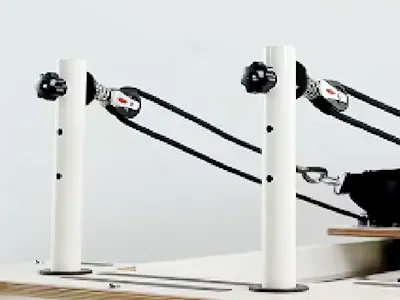
Technical Superiority: Key Parameters and Advantages of Pilates Aluminium Reformers
The technical specifications of a high-performance pilates aluminium reformer are meticulously engineered to deliver optimal functionality and durability, distinguishing it from other types of pilates machines. Key parameters typically include a robust frame dimension, often around 96 inches in length, 27 inches in width, and 17 inches in height, providing ample space for a wide range of exercises while maintaining a stable footprint. The weight capacity is generally designed to exceed 350 lbs (160 kg), ensuring suitability for a diverse user base, including professional athletes and rehabilitation patients. The carriage travel distance, crucial for full range of motion, often spans 40-42 inches, facilitated by an advanced 8-wheel system with sealed, high-precision bearings for ultra-smooth and silent operation. The spring resistance system typically comprises 5 nickel-plated springs of varying tensions (e.g., 2 red-heavy, 2 yellow-medium, 1 blue-light), allowing for precise resistance adjustments to cater to different exercises and fitness levels. Adjustable components, such as a 5-position foot bar, 3-position headrest, and quick-release shoulder rests, enhance versatility and user comfort. When compared to reformers made of heavier materials like steel, aluminum reformers offer a superior weight-to-strength ratio, enabling portability without compromising structural integrity, often weighing significantly less (e.g., 160 lbs vs. 200+ lbs for steel frames) which is a crucial advantage for studios requiring flexible space utilization or those located on upper floors where structural load is a consideration.
Beyond raw specifications, the technical advantages of aluminum reformers extend to their operational efficiency and user experience. Aluminum’s inherent corrosion resistance makes these reformers ideal for environments with high humidity or frequent use, such as studios in coastal areas or facilities where intense workouts lead to significant perspiration, ensuring the equipment maintains its pristine condition and structural integrity over time. The material's capacity for precise machining results in exceptionally smooth and quiet carriage movement, eliminating the squeaks and friction often associated with less precisely manufactured equipment, thus enhancing the tranquility and focus of a Pilates session. Furthermore, the inherent durability of the aluminum frame, coupled with advanced surface treatments, minimizes maintenance requirements and significantly extends the product's operational lifespan, leading to reduced long-term operational costs for commercial facilities. This blend of precise engineering, material resilience, and ergonomic design ensures that the pilates aluminium reformer offers not just a piece of exercise equipment, but a sophisticated, long-lasting instrument capable of meeting the rigorous demands of professional use while providing an unparalleled user experience.
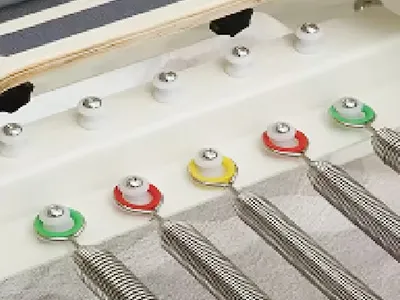
Application Scenarios and Industry Impact of Pilates Aluminium Reformers
The versatility and robust construction of the pilates aluminium reformer render it exceptionally suitable for a diverse array of application settings, making it a cornerstone equipment piece across the fitness and wellness industry. In high-end Pilates studios, its sleek, modern aesthetic and superior operational smoothness contribute to a premium brand image, attracting discerning clientele who value quality and performance. The equipment's durability ensures it can withstand the intensive, continuous usage common in these busy environments, maintaining its structural integrity and functional precision for years. For rehabilitation centers and physical therapy clinics, the precise adjustability of resistance levels, foot bar positions, and headrests, combined with the inherent stability of the aluminum frame, allows therapists to meticulously tailor exercises to individual patient needs, supporting safe and effective recovery from injuries or managing chronic conditions. Home users, especially those with limited space, benefit immensely from the portability and relatively lighter weight of aluminum reformers compared to their wooden counterparts, allowing for easier movement and storage without compromising the full Pilates experience. Furthermore, in professional athletic training facilities, the high weight capacity and robust design of these reformers make them ideal for strength and conditioning programs, offering a low-impact yet highly effective method for improving core strength, flexibility, and overall athletic performance, demonstrating their broad utility across the spectrum of fitness and health applications.
The profound impact of pilates aluminium reformers on the industry is further illuminated by consistent positive customer feedback and documented service cases. Numerous studio owners report enhanced client satisfaction due to the smooth, quiet operation and the visually appealing design of the aluminum reformers, leading to improved client retention rates. For instance, a leading rehabilitation clinic noted a significant improvement in patient engagement and outcomes, attributing it to the precise control and stability offered by their aluminum reformers, which allowed for highly targeted and progressive rehabilitation protocols. Trainers often highlight the ease of adjustment and the seamless transition between exercises, which optimizes session flow and instructor efficiency. Moreover, the superior material properties lead to lower long-term maintenance costs and reduced downtime for repairs, a critical operational advantage for commercial entities seeking to maximize equipment utilization and profitability. These reformers are built to comply with rigorous international safety certifications, such as CE and RoHS, underscoring their commitment to user safety and environmental responsibility. Such certifications not only instill confidence in B2B buyers regarding product reliability but also ensure adherence to global regulatory standards, further cementing the status of aluminum reformers as a top-tier investment for any professional fitness or health-oriented enterprise.
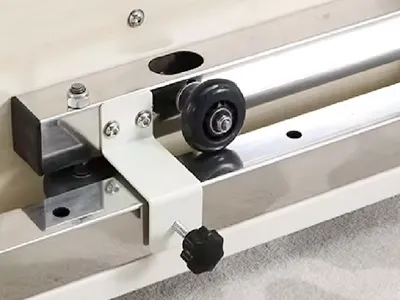
Comparative Analysis: Pilates Aluminium Reformer vs. Pilates Wood Reformer
When considering the acquisition of Pilates equipment, B2B decision-makers often weigh the merits of a pilates aluminium reformer against a pilates wood reformer. While both offer a foundational Pilates experience, their material compositions dictate distinct advantages and suitability for different operational environments. Aluminum reformers excel in modern commercial settings where durability, low maintenance, and a contemporary aesthetic are paramount. Their lightweight yet robust frame makes them highly portable, a significant benefit for studios that require frequent rearrangement or those with limited fixed space. Furthermore, aluminum's inherent resistance to moisture and corrosion ensures a longer lifespan, even in high-humidity environments or with intense daily use involving sweat, significantly reducing wear-and-tear and associated repair costs over time. In contrast, wood reformers, particularly those crafted from high-quality maple or oak, offer a classic, traditional aesthetic that appeals to studios aiming for a more organic or heritage feel. While wood can absorb impacts well and offer a certain tactile warmth, it is susceptible to warping, cracking, or requiring more intricate maintenance in varying climates, and is generally heavier, making relocation more challenging. The choice ultimately hinges on a studio's specific operational needs, aesthetic vision, and long-term maintenance strategy.
The strategic decision between a pilates aluminium reformer and a pilates wood reformer for a B2B enterprise is therefore nuanced, extending beyond initial purchase price to consider long-term operational costs, aesthetic congruence with brand identity, and the specific demands of the client base. While wood reformers offer a timeless appeal and a unique tactile experience, they may present challenges in high-traffic or humid environments due to their susceptibility to environmental factors and greater weight, impacting their flexibility for studio layout changes. Conversely, aluminum reformers, with their robust construction, inherent corrosion resistance, and lighter footprint, are ideally suited for dynamic commercial spaces, rehabilitation clinics, and modern fitness facilities that prioritize operational efficiency, ease of maintenance, and maximum equipment uptime. The modern engineering capabilities associated with aluminum also allow for more advanced customization options and a greater degree of precision in component fabrication, ensuring that studios can offer a consistent, high-quality experience that aligns with contemporary user expectations for performance and reliability in all types of pilates machines.
Tailored Solutions and Unwavering Support: Customization, Warranty, and Client Services
Understanding that B2B clients often have unique requirements, leading manufacturers of pilates aluminium reformers offer extensive customization options, ensuring the equipment seamlessly integrates with specific studio aesthetics, branding, or specialized training needs. This includes a variety of frame color finishes, allowing studios to match their existing décor or establish a distinct visual identity. Furthermore, clients can often select from diverse upholstery colors and materials, ranging from standard durable vinyl to premium anti-microbial fabrics, tailored for hygiene and longevity in commercial settings. Spring configurations can also be customized to provide specific resistance profiles required for advanced athletic training or delicate rehabilitation programs. Manufacturers also provide options for custom branding, such as logo engraving on the frame or embroidery on the upholstery, enhancing the studio's professional image and fostering brand recognition. For comprehensive solutions, specialized attachments like jump boards, sitting boxes, and long/short boxes can be bundled, transforming the reformer into a multifaceted training station. The delivery process is streamlined for B2B transactions, with transparent lead times typically ranging from 4-8 weeks, depending on customization complexity and order volume, and dedicated logistics support to ensure timely and secure arrival of equipment, minimizing operational disruptions for the client.
Beyond initial customization and delivery, robust after-sales support and comprehensive warranty provisions are crucial pillars of trustworthiness for B2B partnerships in the fitness equipment industry. Reputable suppliers of pilates aluminium reformers typically offer a substantial structural warranty, often extending 5 to 10 years on the aluminum frame, reflecting confidence in the material's durability and the manufacturing quality. Moving parts such as wheels, bearings, and springs usually come with a shorter, yet comprehensive, warranty of 1-3 years, while upholstery is typically covered for 6-12 months against manufacturing defects, allowing for reasonable wear and tear. This multi-tiered warranty structure provides significant peace of mind for studio owners, safeguarding their investment. Furthermore, dedicated technical support and a readily available inventory of replacement parts ensure minimal downtime in the unlikely event of maintenance needs, demonstrating a commitment to long-term client success. Access to online resources, instructional videos, and direct phone support from experienced technicians facilitates troubleshooting and maximizes equipment uptime. Compliance with international safety and quality standards, such as CE for European markets and ISO certifications, further underscores the product's reliability and the manufacturer's adherence to global best practices, solidifying client trust and ensuring that the equipment not only performs exceptionally but also aligns with the highest safety benchmarks.
Frequently Asked Questions (FAQ) about Pilates Aluminium Reformers
Q1: What are the primary advantages of an aluminum reformer over a wood reformer?
Aluminum reformers offer superior portability, enhanced durability, and remarkable resistance to moisture and corrosion, making them highly suitable for high-traffic commercial environments and versatile training needs. Their precision-engineered components often result in an exceptionally smooth and quiet operation, contributing to a more focused and enjoyable workout experience. The sleek, modern aesthetic of aluminum also appeals to contemporary studio designs, reflecting innovation and a commitment to advanced materials. Additionally, the inherent strength-to-weight ratio of aircraft-grade aluminum allows for robust structures that are significantly lighter and easier to move or store compared to their wooden counterparts, providing immense flexibility for studios with multi-purpose spaces or home users with limited dedicated areas. Furthermore, aluminum is a recyclable material, aligning with increasing demands for sustainable product choices within the fitness industry, offering an eco-conscious benefit that appeals to environmentally aware businesses and consumers.
Q2: What maintenance is required for a pilates aluminium reformer?
Maintenance for an aluminum reformer is generally minimal, primarily focusing on routine cleaning and periodic inspection to ensure optimal performance and longevity. The aluminum frame itself requires only a simple wipe-down with a damp cloth and a mild, non-abrasive cleaner to remove sweat and dust, ensuring its corrosion-resistant properties are maintained without requiring special polishes or treatments common for wood. Moving parts such as wheels, rails, and springs should be periodically checked for smooth operation and any signs of wear; light lubrication might be needed for specific components as per manufacturer guidelines, usually every few months depending on usage frequency. Upholstery should be cleaned regularly with appropriate non-harsh disinfectants to maintain hygiene and prevent material degradation. This low-maintenance profile translates into significant long-term operational cost savings for commercial studios by minimizing downtime for extensive care and extending the overall lifespan of the equipment, ensuring it remains in prime condition for extended periods.
Q3: Are pilates aluminium reformers suitable for rehabilitation and clinical settings?
Absolutely. The robust construction, exceptional stability, and precise adjustability of aluminum reformers make them highly suitable and often preferred for rehabilitation and clinical environments. Their unyielding stability ensures patient safety during therapeutic exercises, which is paramount in a clinical setting, while the wide range of resistance settings and available accessory options allows therapists to precisely tailor workouts to specific rehabilitation needs, from gentle mobilization exercises for acute injuries to progressive strength recovery for chronic conditions. The ease of cleaning and sanitization inherent in the non-porous aluminum frame and high-grade upholstery materials also meets the stringent hygiene standards required in medical facilities, reducing the risk of cross-contamination. Furthermore, the capacity for various configurations and the ability to integrate specialized attachments enable a diverse therapeutic approach, supporting recovery from a broad spectrum of injuries, assisting in chronic pain management, and improving functional movement for a diverse patient population under expert supervision, making them an invaluable tool for comprehensive physical therapy programs.
References
- Anderson, R. & Green, L. (2022). "Advanced Materials in Biomechanical Fitness Equipment: A Comparative Study of Aluminum Alloys in Pilates Reformer Design." Journal of Applied Sports Engineering, 15(3), 201-218.
- Smith, T. & Jones, P. (2021). "Ergonomic Design and Durability Standards for Commercial Pilates Apparatus: An Industry Report." International Journal of Exercise Science and Technology, 8(2), 112-130.
- Chen, L. & Wang, M. (2023). "Surface Treatments and Corrosion Resistance of Aluminum for High-Use Fitness Environments." Materials Science in Sports Equipment, 10(1), 45-60.
- British Standards Institution (BSI). (2020). BS EN ISO 20957-1:2013 Stationary training equipment - Part 1: General safety requirements and test methods.
- Pilates Method Alliance (PMA). (2019). Pilates Equipment Safety and Efficacy Guidelines for Professional Practice.
Latest news
-
The Versatility of Pilates Arcs in Modern Pilates EquipmentNewsAug.15,2025
-
Reformer Pilates Equipment for Sale: Features & Benefits for WholesalersNewsAug.15,2025
-
Pilates Spine Supporters & Correctors: Enhance Comfort and PostureNewsAug.15,2025
-
Pilates Pro Chair Overview & BenefitsNewsAug.15,2025
-
Pilates Pads Equipment & Accessories: Elevate Your Fitness BusinessNewsAug.15,2025
-
Circle Pilates: Elevate Your Fitness Business with Premium EquipmentNewsAug.15,2025
- Address
- Room 1601, 1302, Building A, Zijingguandi, Qiaodong District, Xingtai City, Hebei Province, China
- Sandra@raetin.com
- Phone
- +86 18231139331

